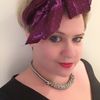From September 30th, Hoxton Gallery will be presenting Unseen Paintings, 1954-1960, a survey of works in oil by the late Keith Cunningham.
Cunningham, who died in 2o14 aged 85, was a contemporary of Frank Auerbach and Leon Kossoff at the Royal College of Art in the mid-195os, where his work was praised by John Minton (1917 - 1957) who described him as 'one of the most gifted painters to have worked at the Royal College'. On graduating from the college in 1956, Cunningham exhibited at the Royal Academy and the Beaux Arts Gallery - then one of the most influential galleries in London - at the invitation of its director, Helen Lessore (19o7 - 1994).
His work was shown twice with the prestigious London Group, where it was singled out by The Times art critic for its power and suggestive presence; meanwhile, The Jewish Chronicle spoke of the intense yet controlled atmosphere of his work. While he was supported by influential collectors of the time, such as Hans and Elsbeth Juda, as well as public institutions in the UK and abroad, in 1967 Cunningham declined all further invitations to exhibit. Instead he pursued a highly successful career as a graphic designer. He continued painting, visiting his studio every day.
This exhibition, the first of a series that are planned, focuses on three bodies of work. In the gallery's first room are two suites of paintings which have been titled 'Heads' and 'Skulls'†. Cunningham did not identify the subjects of the former - he did not use sitters, preferring instead to sketch people around London while on the bus or sitting in cafes. The influence of Rembrandt is evident in these works, not just in the somber colour palette, but also by their intensity. They are all deeply psychological, evoking a raw humanity that in some works is harrowing .
After Nyne meets Bobby Hillson, co-curator of the Keith Cunningham exhibition: Unseen Paintings 1954-1960 to find out the facts about this extraordinary show.
Keith Cunningham, with the world at his feet...then what happened?
Yes, when he left the Royal College he was certainly up there with a lot of painters who went on to be huge successes. And he was feted himself. Galleries like Beaux Arts, which was the White Cube of its day, wanted to show him. Collectors bought his work, but then he just chose to stop exhibiting. But he continued to go to the studio to work on paintings, and made his living doing graphic and other design work, including book covers. He is much celebrated for this work.
Why did he disappear? Was it discomfort with the concept of fame?
He didn't explain his reasons, but I always felt he intended to return to showing his work in the future. I'm not sure if fame bothered him, but then artists weren't famous in the way they are now.
Why this show, and why now?
The show came about as a result of my meeting Stephen Rothholz. Stephen has been involved in fashion, like me [Bobby founded the MA fashion course at St Martin's College of Art]. Like me, he felt they Keith's work deserved to be seen.
Give us an overview of the treasures found after his death.
Apart from the 150 oil paintings, we also found quantities of pastels, drawings, small sculptures of birds, etchings and his later watercolours. Only a few people had ever seen these because he was very secretive, only allowing a few people to visit his studio.
Who has been involved in this show?
The show is being co-curated by myself and Stephen Rothholz, and we are both indebted to Mike Dempsey for all his help and contributions including the design of the catalogue and introductory essay.
Where, in your opinion, does Keith Cunningham fit into the canon of British art?
The Heads and Skulls being shown were all painted between 1954-60 and fit firmly in the period but retain an individual quality of their own. They are in the tradition of memento mori and vanitas paintings. But anyone who comes to the show will see that there is something strangely familiar about the paintings, not in style or subject matter, just a certain feeling. Like his RCA contemporaries, Frank Auerbach and Leon Kossoff, there is a certain existential angst about them, plus you can see the same materiality of paint handling.
What challenges did you face as the curator?
The main challenge was choosing what best represents Keith's work. There were many to chose from. Only those who come to the show can tells us if we got it right.
Keith Cunningham - Unseen Paintings 1954-1960
Hoxton Gallery |59 Old Street | London | EC1V 9HX
September 30th -October 13th 2016
Private View: Thursday
September 29th, 6 - 8.30pm
This interview originally featured on the After Nyne Magazine blog http://www.afternyne.com
